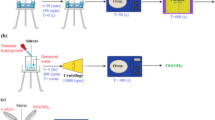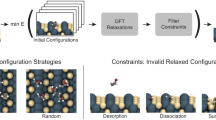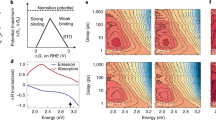Abstract
CONSIDER the case of a unimolecular gas reaction catalysed by a surface obeying the Langmuir adsorption isotherm, with true velocity constant k, adsorption coefficient b, heat of adsorption λ, surface coverage θ, pressure p. It is possible to derive a very simple relation between apparent activation energy Ea, true activation energy Et, and θ, which should prove of considerable utility. The rate r is:  where
where  hence
hence  substituting θ/1 – θ = bp
substituting θ/1 – θ = bp 
This is a preview of subscription content, access via your institution
Access options
Subscribe to this journal
Receive 51 print issues and online access
$199.00 per year
only $3.90 per issue
Buy this article
- Purchase on SpringerLink
- Instant access to full article PDF
Prices may be subject to local taxes which are calculated during checkout
Similar content being viewed by others
References
Hinshelwood, C. N., The Kinetics of Chemical Change, Chap. 8 (Oxford Univ. Press, 1940).
Sandler, Y. L., J. Chem. Phys., 21, 2243 (1953).
Eley, D. D., Trans. Farad. Soc., 44, 216 (1948).
Author information
Authors and Affiliations
Rights and permissions
About this article
Cite this article
ELEY, D. Activation Energy and Fractional Order. Nature 194, 1076 (1962). https://doi.org/10.1038/1941076a0
Issue date:
DOI: https://doi.org/10.1038/1941076a0
This article is cited by
-
A kinetic study on the methanol conversion to dimethyl ether over H-ZSM-5 zeolite
Chemical Papers (2021)



